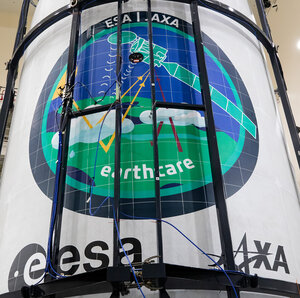

Clouds in the climate system
Clouds are visible masses of minute water droplets or ice crystals suspended in the atmosphere. They come in various shapes and sizes and are found at different altitudes. Clouds play a crucial role in Earth's climate system by reflecting sunlight back into space, known as the albedo effect, and by trapping heat radiating from Earth's surface, part of the greenhouse effect.
However, it’s complicated. For example, high, thin clouds tend to warm the atmosphere because a high proportion of energy from the Sun can pass through and they are also efficient at trapping heat radiating from Earth’s surface. Low, thick clouds on the other hand, tend to have a cooling effect as they reflect a high proportion of the incoming sunlight back out to space.
Today, clouds have an overall cooling effect, but this cooling could become less pronounced in the future further contributing a warming climate.
ESA’s EarthCARE mission is designed to shed new light on this important area of science.
Read more: Clouds and aerosols in the climate system





